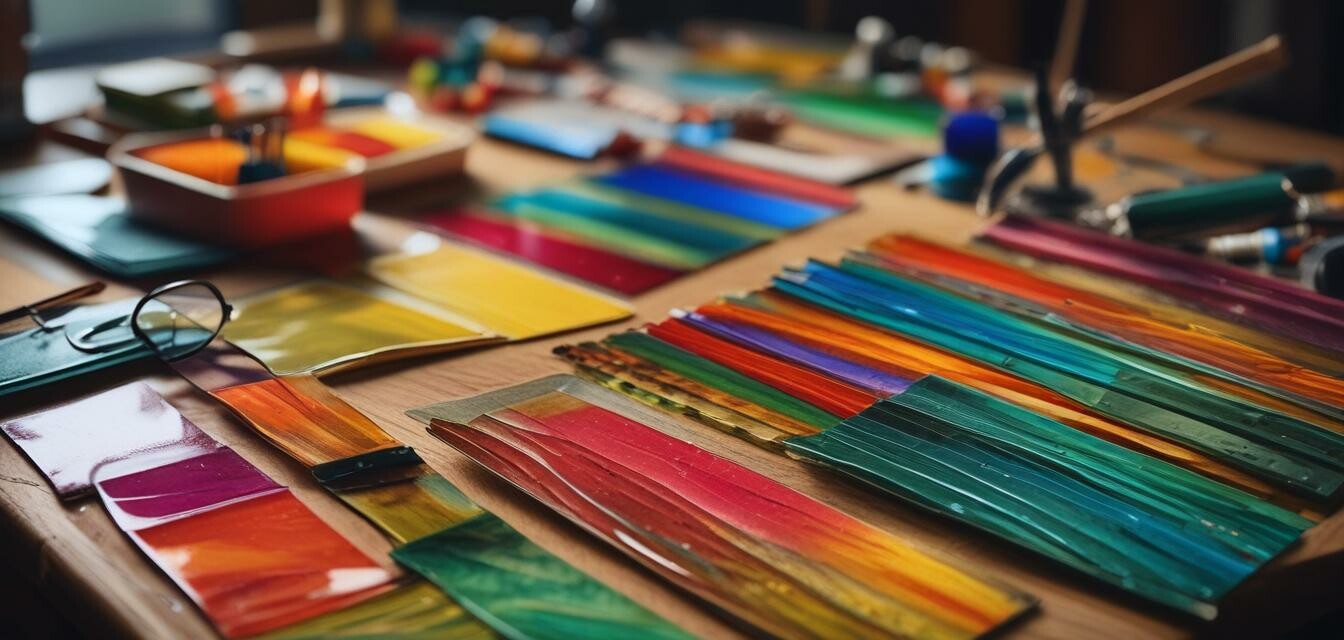
Comparing Fusible and Non-Fusible Glass Sheets
Key Takeaways
- Fusible glass sheets can be melted together to create seamless designs, while non-fusible glass sheets retain their individual forms when heated.
- Choosing the right type of glass depends on the specific project requirements, techniques desired, and the desired outcome.
- Both types of glass have unique characteristics and uses in glass art and can be purchased at affordable prices through daily deals.
When embarking on a glass art project, one of the most crucial decisions artists face is selecting the right type of glass. Among the various choices available, fusible and non-fusible glass sheets stand out. This article will provide an in-depth comparison of these two varieties, exploring their differences, various uses, and guidance on which to choose for specific glass art projects.
Understanding the Basics
To make an informed decision, it’s essential to understand the key characteristics of fusible and non-fusible glass sheets.
| Type of Glass | Definition | Common Uses |
|---|---|---|
| Fusible Glass | Glass designed to melt and fuse together at specific temperatures. | Fusing, slumping, creating layered art pieces. |
| Non-Fusible Glass | Glass that does not adhere when heated. | Stained glass windows, mosaic art. |
Diving Deeper into Fusible Glass
Fusible glass sheets are engineered to be melted at higher temperatures, typically around 1200°F to 1600°F (649°C to 871°C). When heated, these sheets blend together smoothly, allowing for the creation of seamless designs. Here are some common applications where fusible glass shines:
- Creating intricate fused glass art.
- Slumping over molds to achieve specific shapes.
- Layering in projects to create depth and texture.
Exploring Non-Fusible Glass
In contrast, non-fusible glass sheets are made to remain distinct even when heated. They do not adhere to each other, which makes them ideal for various applications, such as:
- Creating stained glass windows with distinctively shaped pieces.
- Making beautiful mosaics and collages.
- Utilizing in glass painting techniques for added designs.
Comparative Analysis: Fusible vs Non-Fusible Glass Sheets
| Criteria | Fusible Glass | Non-Fusible Glass |
|---|---|---|
| Melt Characteristics | Merges when heated | Retains shape when heated |
| Project Types | Fusing and slumping | Stained glass and mosaic art |
| Temperature Required | Higher temperatures (1200°F - 1600°F) | Lower temperatures, varies by type |
| Design Flexibility | High, with layering options | Medium, with shape limitations |
| Cost | Varies, usually slightly higher | Generally lower |
Which Glass Should You Choose?
The decision between fusible and non-fusible glass largely depends on the intended use and desired outcome of your project. For artists interested in:
- Creating seamless joints and layering effects, fusible glass is the better choice.
- Engaging in traditional stained glass techniques, non-fusible glass is ideal.
- Exploring both techniques, consider experimenting with both types of sheets to understand their characteristics.
Cost Considerations
While cost is often a concern for artists, both types of sheets can be found at various price points, typically influenced by quality and brand. Regular sales can provide excellent opportunities to acquire materials for your projects:
| Glass Type | Average Price Range |
|---|---|
| Fusible Glass Sheets | $10 - $30 per sheet |
| Non-Fusible Glass Sheets | $5 - $25 per sheet |
Conclusion
In conclusion, understanding the fundamental differences between fusible and non-fusible glass sheets can greatly enhance your glass art-making experience. By assessing your project needs and exploring each type’s characteristics, you can choose the perfect material to bring your creative vision to life. To view a wide variety of supplies and equipment, be sure to check out our glass sheets and supplies section.
Tips for Beginners
- Start with small projects using both types to build confidence.
- Keep a journal to document your experiments and outcomes.
- Join local glass-making classes to improve your skills.
Pros
- Fusible glass allows for versatile layering and design.
- Non-fusible glass provides stability in structure for traditional techniques.
- Both types can yield stunning results when used appropriately.
Cons
- Fusible glass can be more expensive.
- Non-fusible glass may limit some artistic creations.
- Requires knowledge and skill to use effectively.

